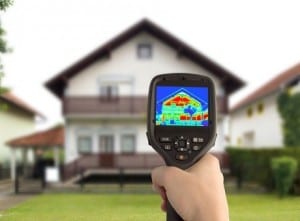Financing Home Energy Efficiency: Lessons from the Green Deal and Needs for the Future
By ucqbldv, on 14 April 2015
 On the 24th of March 2015, Mark Bayley, the Chief Executive and Petter Allison, the Commercial Director of the Green Deal Finance Company came to visit the UCL Energy Institute to present their inside knowledge on the start-up phase and the current development of the Green Deal.
On the 24th of March 2015, Mark Bayley, the Chief Executive and Petter Allison, the Commercial Director of the Green Deal Finance Company came to visit the UCL Energy Institute to present their inside knowledge on the start-up phase and the current development of the Green Deal.
– The Green Deal, funded by Government, Obligated Energy Suppliers, and others interested in energy, is a unique concept under which the householder’s borrowings for improvement work to obtain home energy efficiency can be repaid by future energy bill savings. The goal is to create a mixed economy that consists of subsidy and householder contributions via the Pay-As-You-Save (PAYS) method and to stimulate investments in the low-carbon retrofit market. –
Current housing stock analysis shows that there are many thousands of poorly insulated buildings in the UK and predictions estimate that 4 out 5 already existing buildings will still be used in 2050. With the Government’s target in mind to reduce carbon emissions by 80% by 2050, it is clear that radical action is needed. Alongside with several other funding opportunities, the Green Deal scheme may now become one of the most attractive ones.
Between the start-up in June 2013 and June 2014, there was only a slight growth in Green Deal applications and building plans. Since October 2014, the number of applications seems to have tripled with now more than 10,000 on-going finance plans and applications with a value of about £40m. The infrastructure of the scheme now seems to have established and the finance team is confident to meet their founding mandate of improving 1 million homes in a decade.
Throughout the presentation, however, it becomes clear that the process from the coordination of the funding until the delivery of energy efficiency is a lot more complicated than one might initially assume. While the flexibility of certain measures which can be implemented, seems to be somewhat restricted (e.g. Wall insulation only up to 100mm), one needs to be reminded that there is a whole mechanism of statutes, algorithms, codes of practice and market limitations behind the scheme and that it is still young and under development.
The finance team’s main objectives are to deliver a scheme from which the individual household can benefit from and to maximise the number of households that can use this scheme (borrow against savings) by maximising the access to finance in order to, in a larger context, reduce carbon emissions.
As financial profit is one of the main drivers of our current economic structure, it is clear that the level of contribution to energy efficiency measures need to be in proportion to the financial savings that can be gained from it. On the other hand, it is clear that government subsidy can not cover 100%.
The valuable improvement of living quality after the retrofit is often a side consequence, leading to very positive feedback from the occupants.
For the further improvement of the scheme, it is believed that clearer communication between the finance team, the application of measures on site and the actual energy performance and carbon emission reduction after application (throughout the whole supply chain), is needed.
All in all, the presentation gave very valuable insights into the progress of the Green Deal with all its challenges and benefits and provided a confident prospect to the UK’s targets.
Post by
Lucas van Laack
MSc Environmental Design and Engineering
Student Representative Bartlett Faculty of the Built Environment
UCL Institute for Environmental Design and Engineering (IEDE)
Watch the full presentation on the UCL-Energy Youtube channel
 Close
Close


